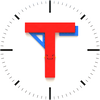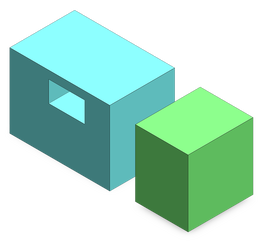|
Multibody parts are solid bodies that can be manipulated in the same ways as a single solid body part. In essence, a multibody part is a part that utilizes a past file format (SLDPRT) but has more than one separate body. You can modify and add different features or change the names, materials, and appearances of each separate body. You can also hide and show different bodies, and believe it or not, mates can be used in a multibody part as well! However, multibody parts should not replace the proper use of assemblies. So, why even bother to use multibody parts? What are the advantages of this feature?
If in your part document are more than one separate body, you will find them under the Solid Bodies folder on the upper part of the design tree. This will give you more freedom in organizing and managing your designs. How to generate multibody parts?Technically, multibody parts are applied by default every time you have two bodies that are not touching. Here is a video demo of how multibody parts work. What else is great about Multibody Parts? You can apply mates!!! Angle, Parallel, Coincident, Perpendicular, Concentric, Tangent, and Distance are supported. This gives you flexibility since multiple sets of mates can be applied to the same body, similar to assemblies. With multibody parts, those mates or movements come under the Move/Copy Bodies command. What is the main difference between Multibody Parts and Assemblies?The multiple solids that compose a multibody part are not dynamic. If you have to use tools like Collision Detection, Dynamic Clearance, or Move Component, you have to use an assembly because these tools are only available within Assembly. The great thing is that you can save an Assembly (or subassembly) as a Multibody Part! When you have to communicate complex assemblies, you may consider saving them as a Multibody Part because:
Next time when you deliver a simplified representation of your work, give this feature a try! What are other reasons for using multibody parts? If you are looking for comprehensive SOLIDWORKS online training, you can check out the TforDesign School SOLIDWORKS courses. By Tirdea Alina, TforDesign Community MemberAlina is a highly detail-oriented person who is striving to get the best outcome of any situation or task. She likes to put accent on quality over quantity while being aware of the work volume. Nevertheless, she is very methodical organized, respecting tasks and deadlines.
LinkedIn: https://www.linkedin.com/in/alina-chipaila
1 Comment
|
AuthorThe following blogs are written by TforDesign team and community members. Categories
All
|
© 2013 - 2024 TforDesign. All rights reserved.
Terms & Conditions | Privacy Policy | Cookie Policy | Sitemap
Terms & Conditions | Privacy Policy | Cookie Policy | Sitemap



 RSS Feed
RSS Feed